Freebooter, GG-loop’s first designed-and-developed residential project in Amsterdam, is a modern “ship on land”, a biophilic small building consisting of two duplexes of 120m2 each which brings a new standard for living spaces based on sustainability principles, energy efficiency, high-quality interior spaces and the use of natural materials.
-text by the authors
“We are part of nature in a deep and fundamental way, but in our modern lives, we’ve lost that connection. Our studio envisions home and city design that respects both inhabitants and the environment, reconnecting both in the process. Freebooter is a response to that; as I see biophilic design as the key to truly innovative design, balancing the technical aspects of environmentally conscious construction with the qualitative, lived-in experience of an organic and natural space” says Giacomo Garziano, architect and founder of GG-loop.
Site and inspiration
Freebooter is a small building located in the center of the island of Zeeburgereiland in Amsterdam, facing the Ij river, consisting of two duplexes of 120m2 each.
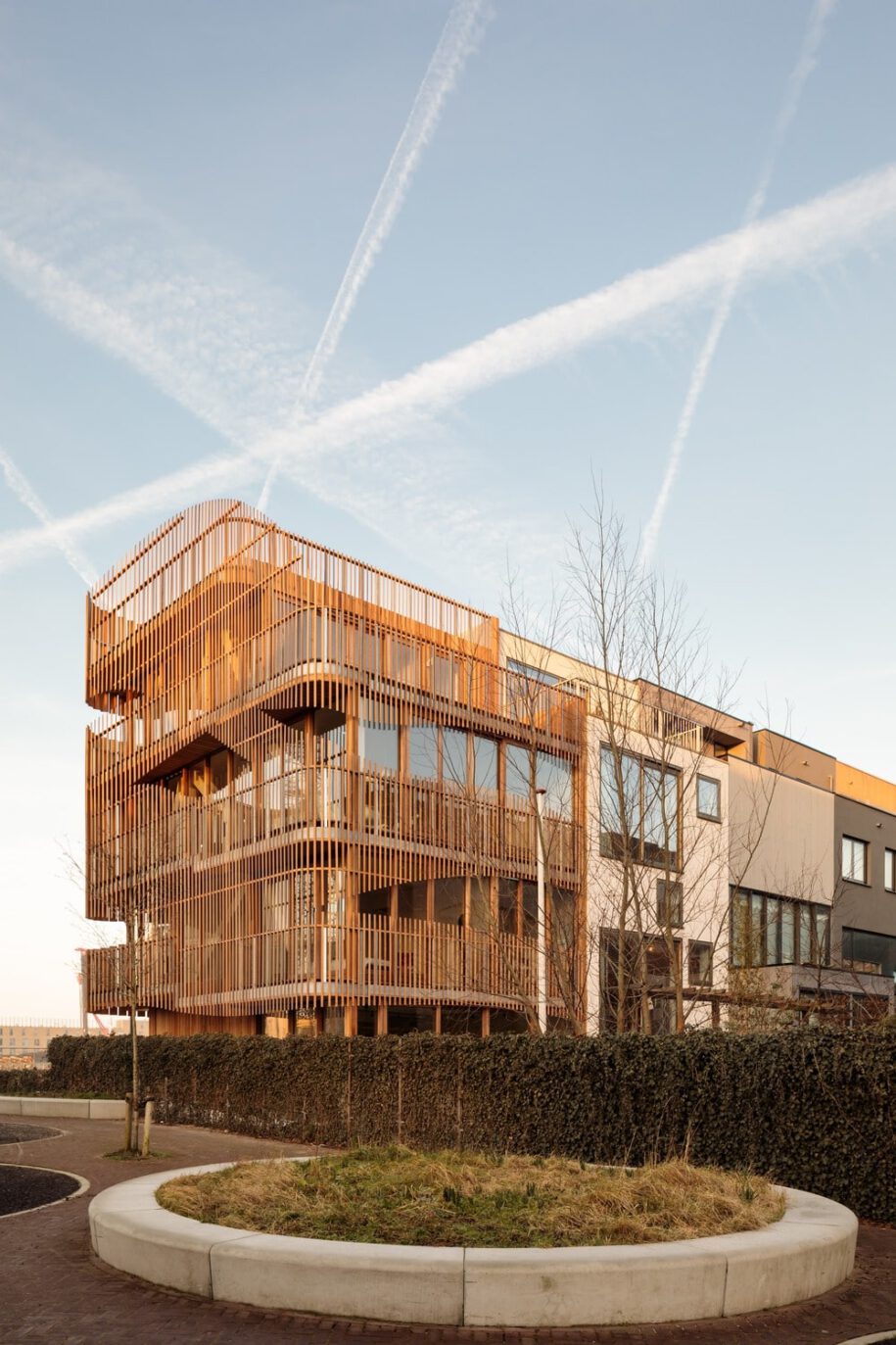
Sensitive to Dutch history, customs and culture, the project took the Netherlands’s maritime past as its starting point. Freebooter thus becomes a modern “ship on land”, with many references to the wind, water, and sailing. On land that belonged to the water, a new ship set sail.
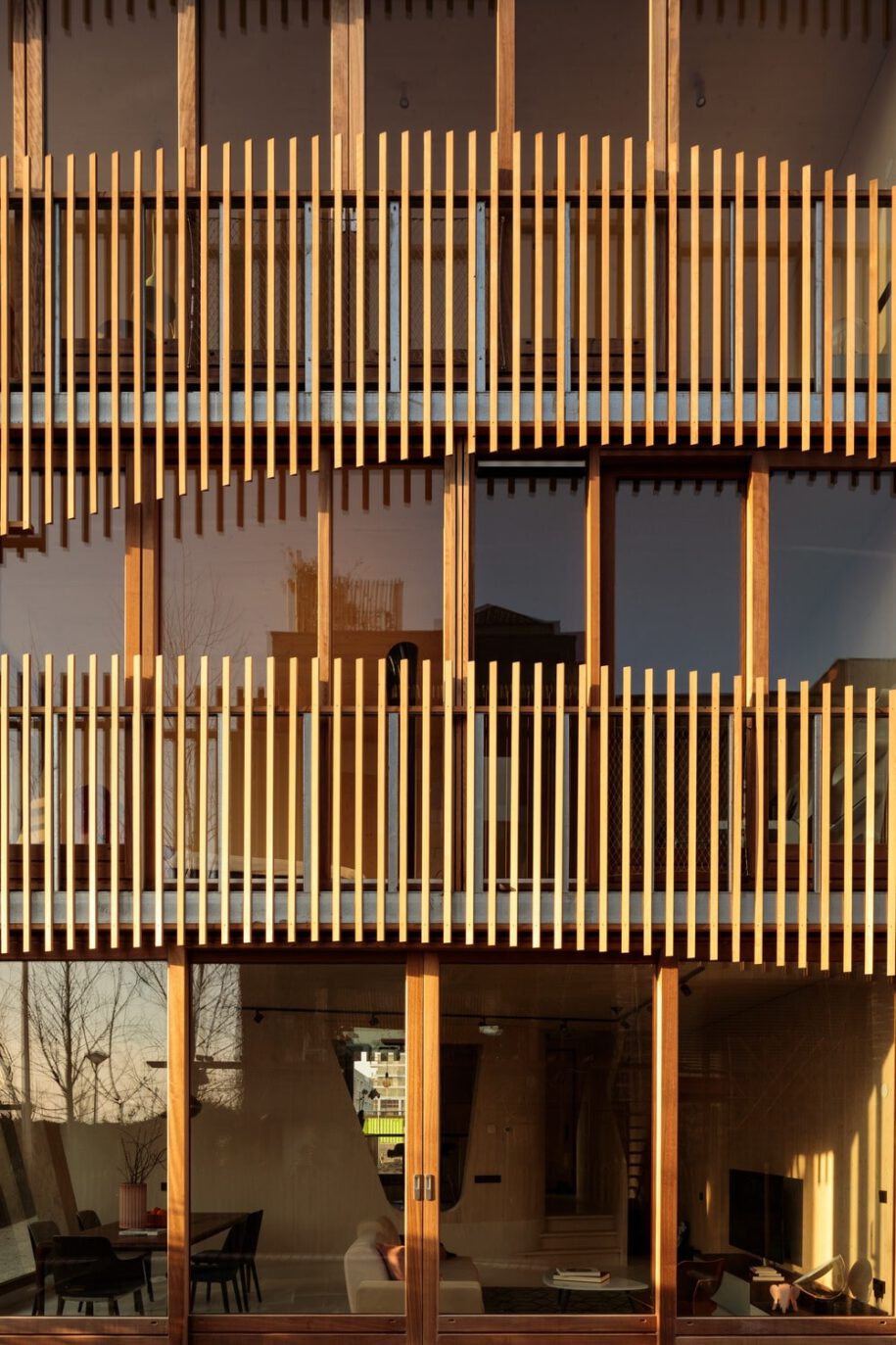
The project’s name itself is a reference to the historical figure of the “Freebooter”, private freelancers who assembled teams of sailors to explore the high seas. As well as acknowledging Dutch innovation and the nations’ pioneering nature, it was the spirit of the Freebooter that project architect, designer and GG-loop founder Giacomo Garziano sought to bring to the apartments, by bringing together a highly qualified team of craftsmen and carpenters to help him achieve his vision.
Architectural choices
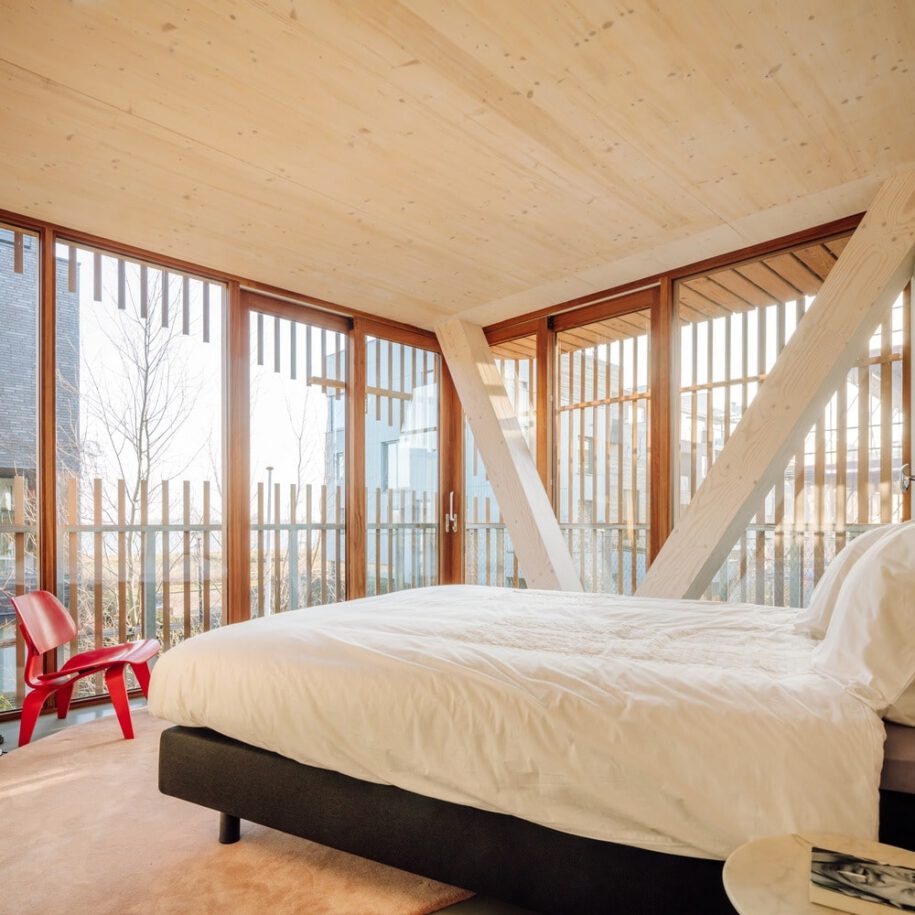
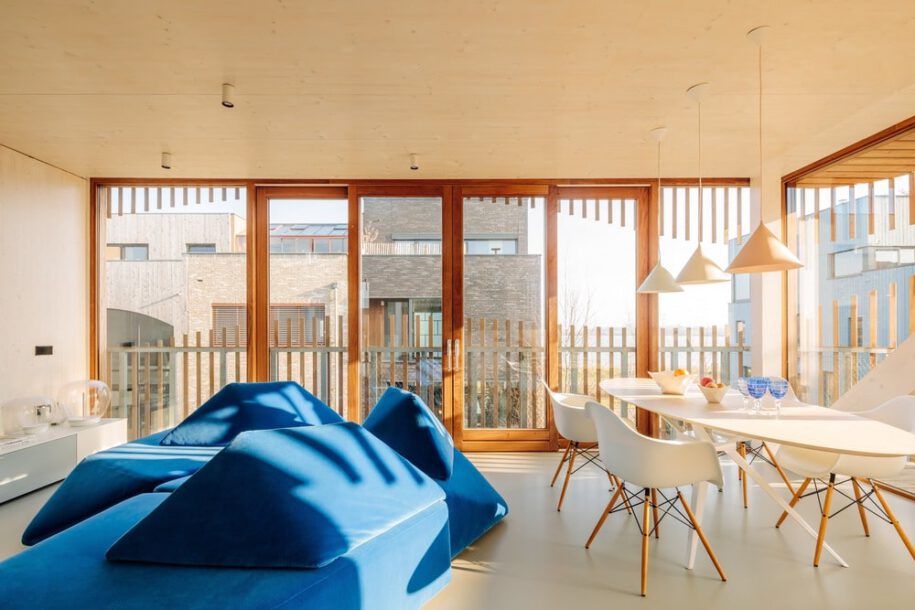
The main materials of the building, like a ship’s hull, were limited to wood, steel, and glass. The floor plan of each apartment, referencing a ship’s layout, is organic and free-flowing, with step-inclines to spaces that are designed to envelop and “unfold” as the inhabitant moves through it.
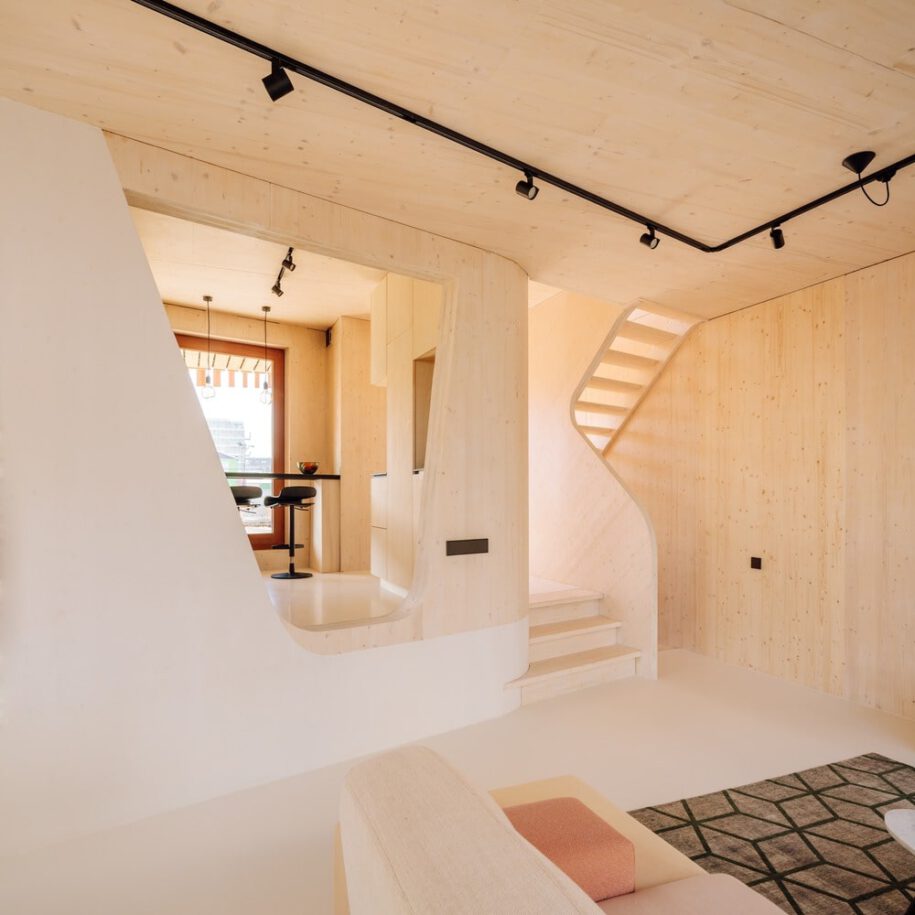
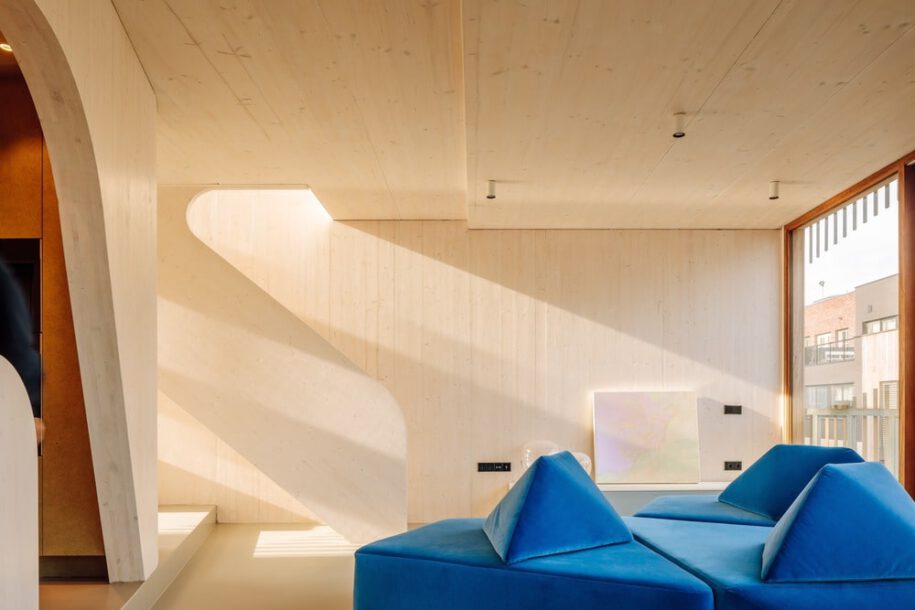
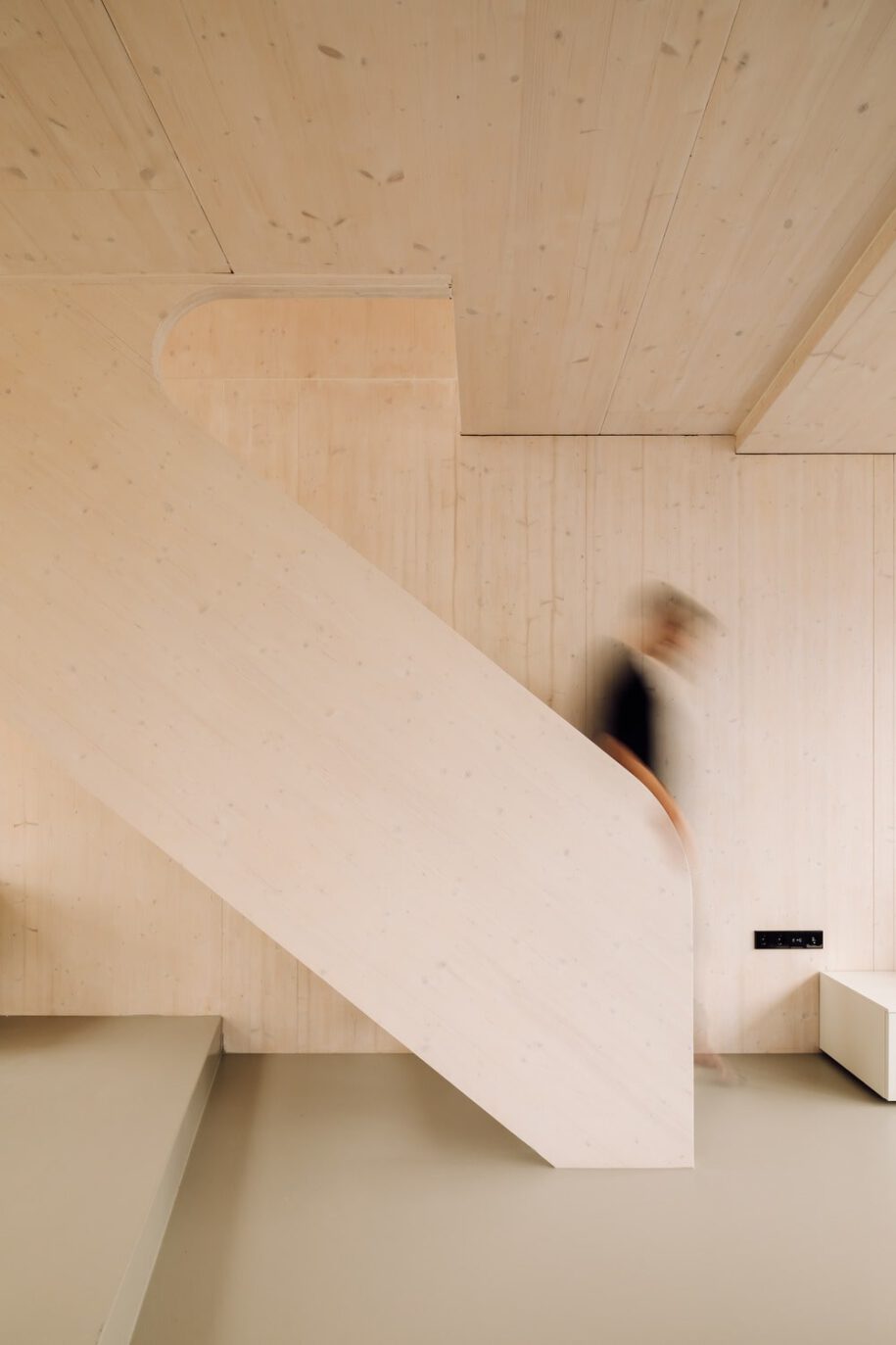
One of the most important features of Freebooter is its use of light. GG-loop conducted a year-round study of light conditions to create the optimal shape and positioning of the structure’s louvers. This parametric facade enabled the optimal distribution of light while simultaneously allowing for an appropriate level of privacy. The project is made of a hybrid structure of Cross Laminated Timber (CLT) and steel, and was prefabricated offsite, allowing for an exceptionally fast built-time of three weeks for the four floors. Finishing the block took 6 months.
Unique properties – A triumph of biophilic, home-owner-centric design
Designed and developed by Amsterdam-based studio GG-loop, the project is an expression of the studio’s signature and philosophy of responding to the design brief with the experience and wellbeing of the end-user continuously in mind. Office’s first residential building in Amsterdam represents the quality standards of its future projects, based on high energy efficiency, high-quality interior spaces, and natural materials.
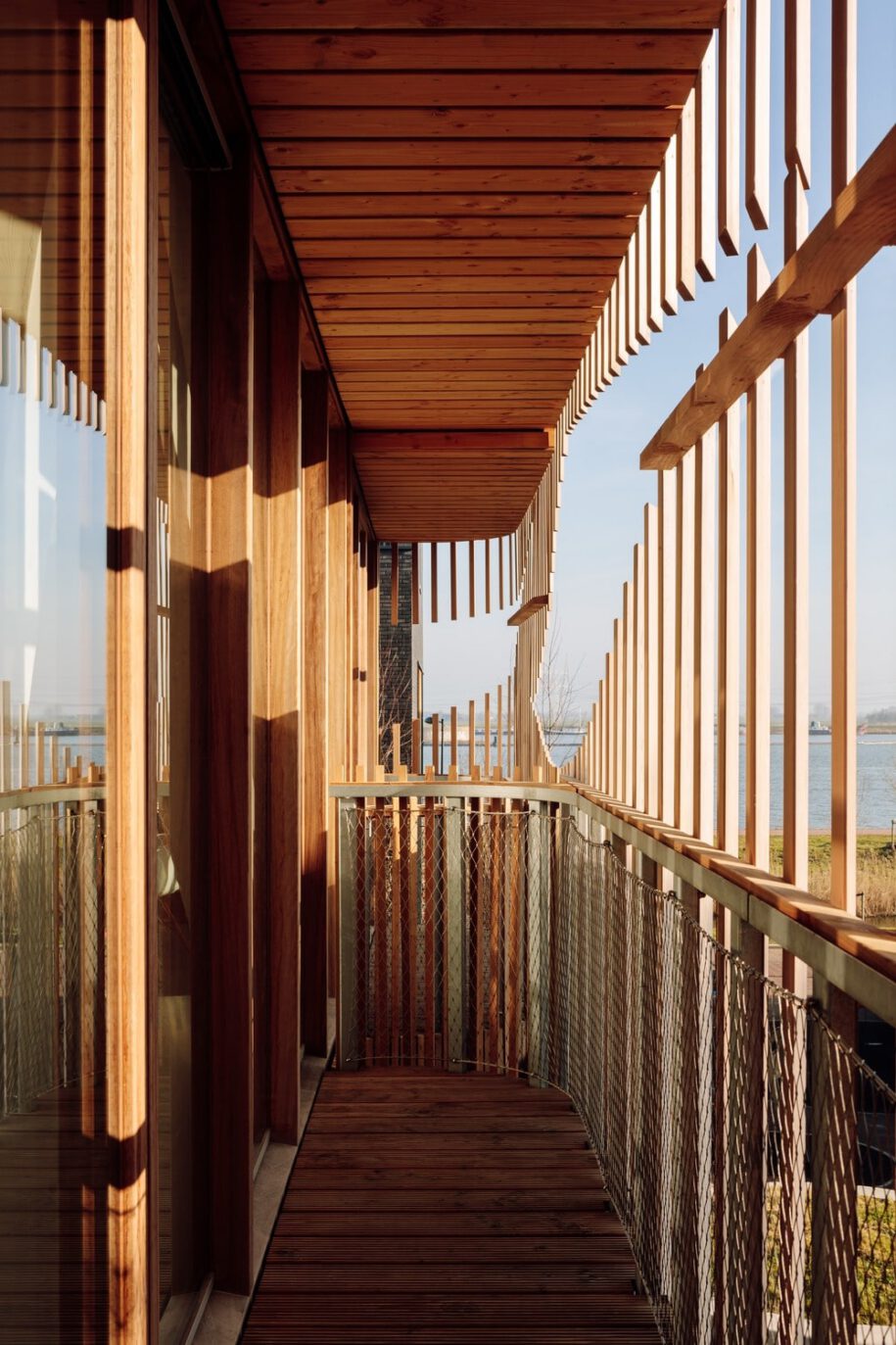
The floorplan, flow of spaces and organic lines were also created with careful consideration of daily use and the typical tasks of dwellers – in short, so the home is a healthy and productive habitat for rest and living.
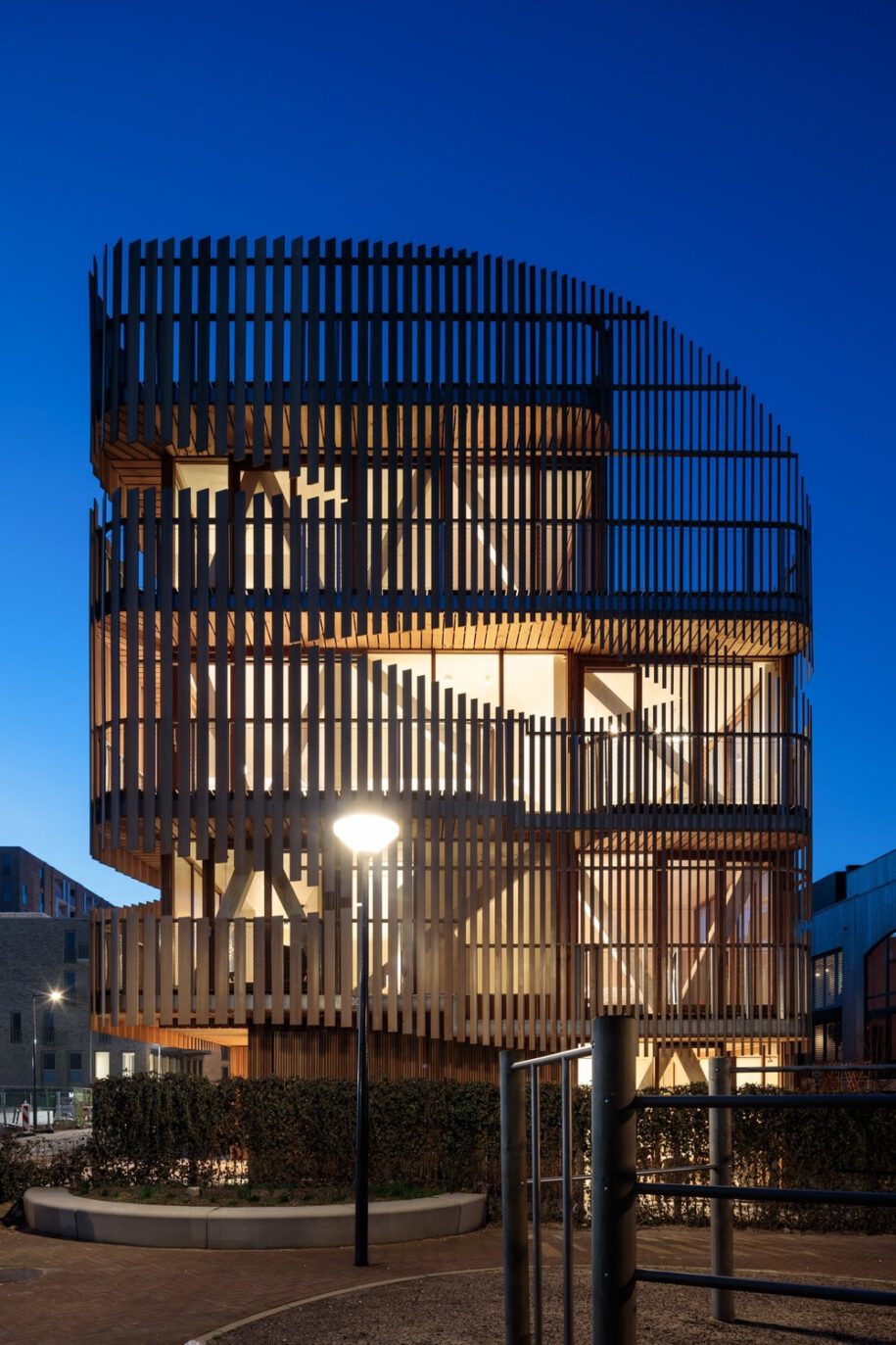
Production
Celebrating craftsmanship in contemporary design, this building of two tailor-made apartments harmonizes form and function on a meticulously designed plan. With a striking exterior, it has become a central point of the district; the block opens onto a compact interior plan revealing combinations of windows, wooden interiors, and high-quality finishes, with open organic curves that walk through comfortable living spaces, promoting a feeling of well-being and connection to nature.
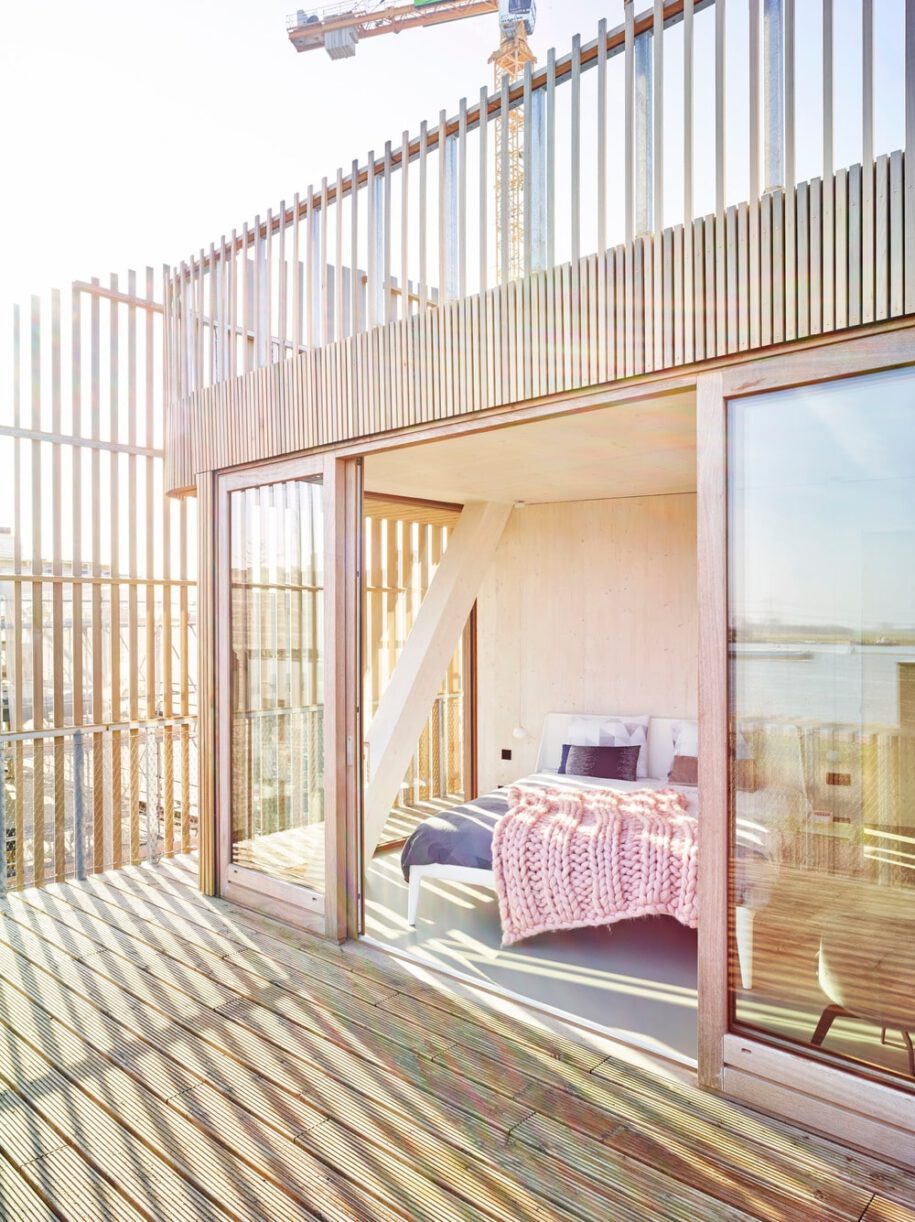
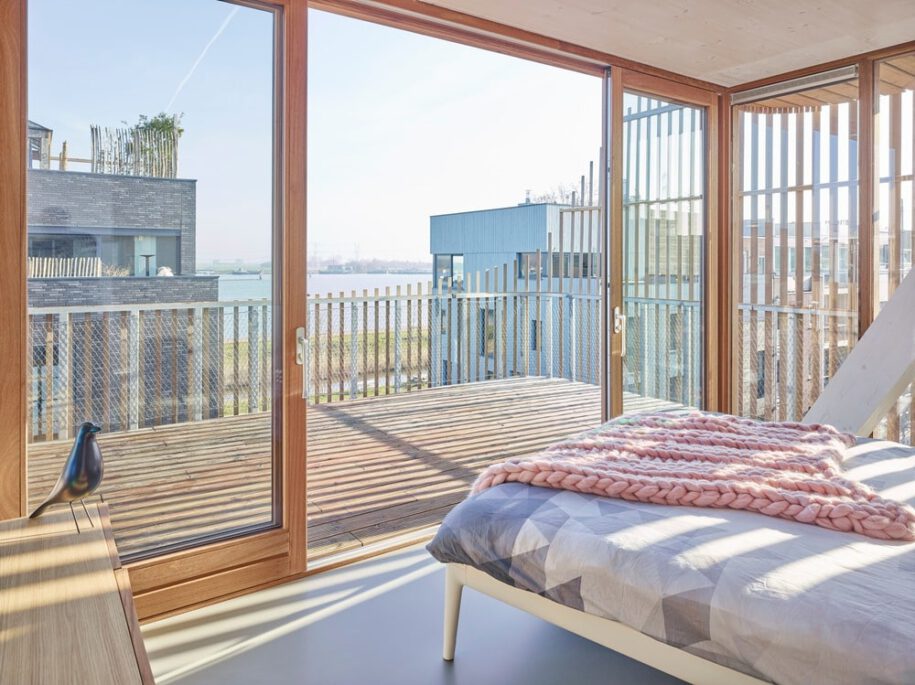
Research & Study
The project is the result of in-depth research in the field of timber construction: the hybrid system in CLT and steel structure was developed throughout the design process to optimize interior space and time of construction.
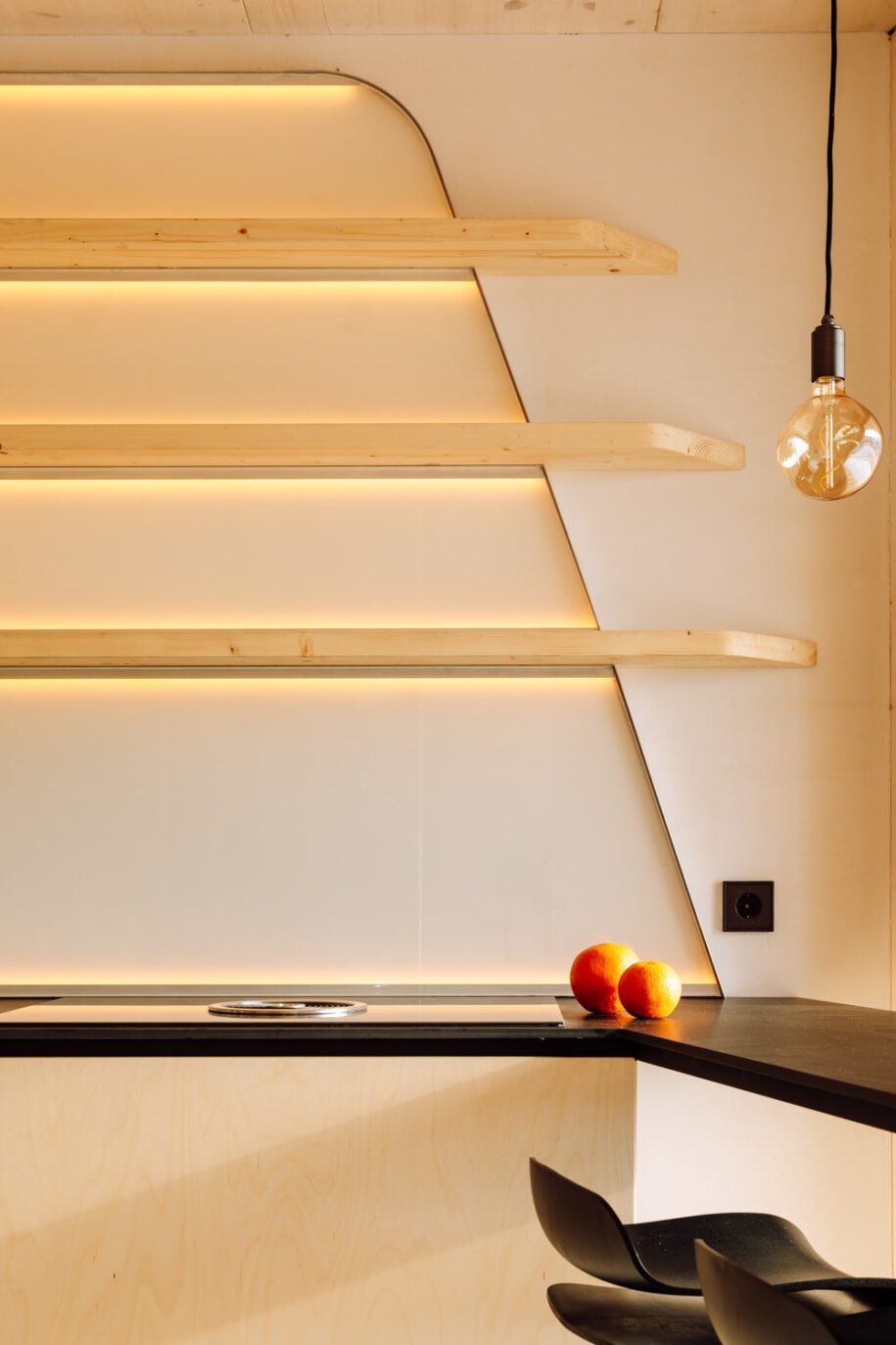
In the initial studies, comparative tests were made between a concrete structure and the CLT structure. The latter has proven to be the most qualitative solution, thanks to its structural performance and its optimization of construction time, but also its carbon footprint since wood naturally stores CO2. The impact on the cost of an efficient CLT structure is less than 10%, compared to a concrete solution.
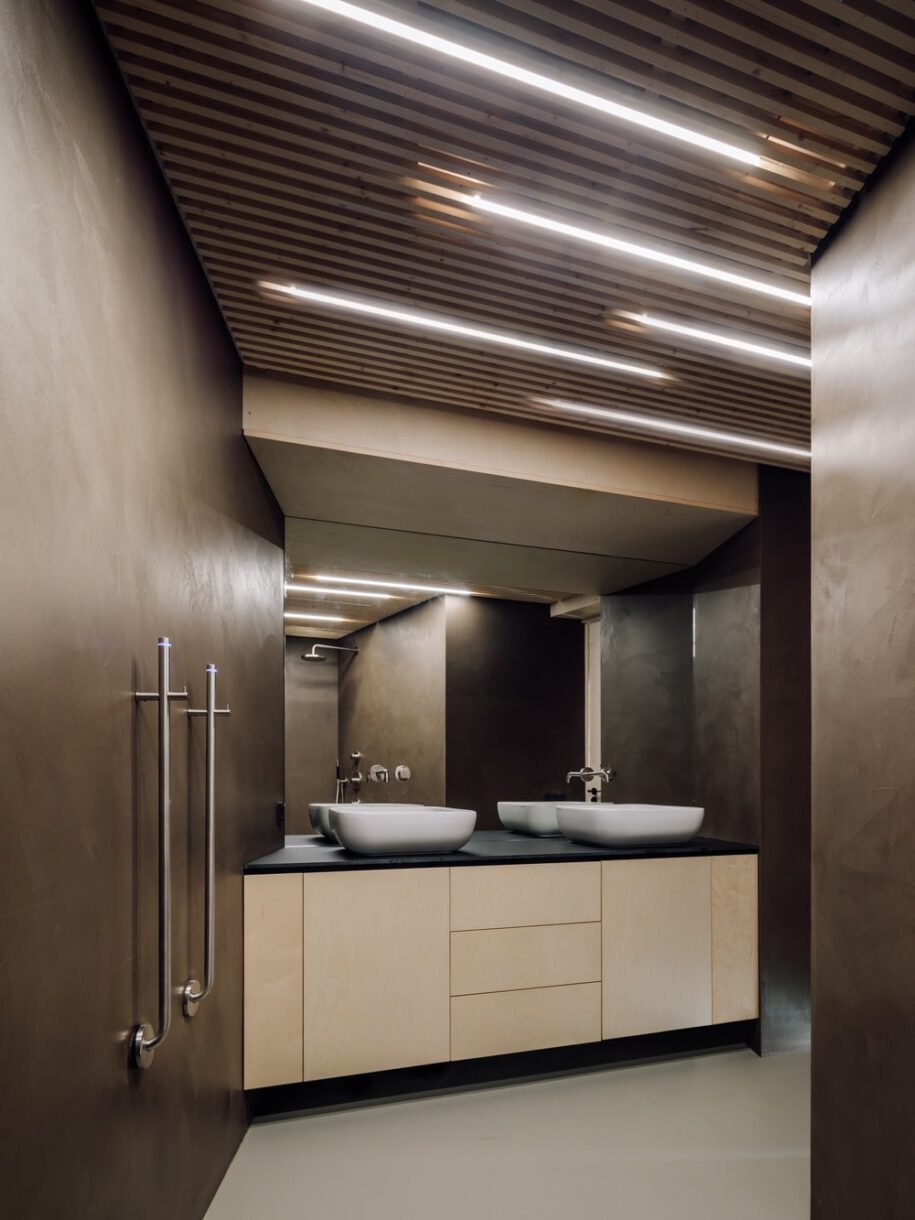
Energy and environment
The building’s energy consumption is close to 0. This result is the combination of 24 solar panels on the roof, high-performance wall insulation, and glass walls, coupled with low-temperature underfloor heating and a mechanical and natural ventilation system. 98% of the wood used is PEFC certified. With 122.5 m3 of wood used, the building stores nearly 80 tonnes of CO2, offsetting nearly 700,000 km of exhaust gas from a mid-range car and the energy consumption of 87 homes in one year.
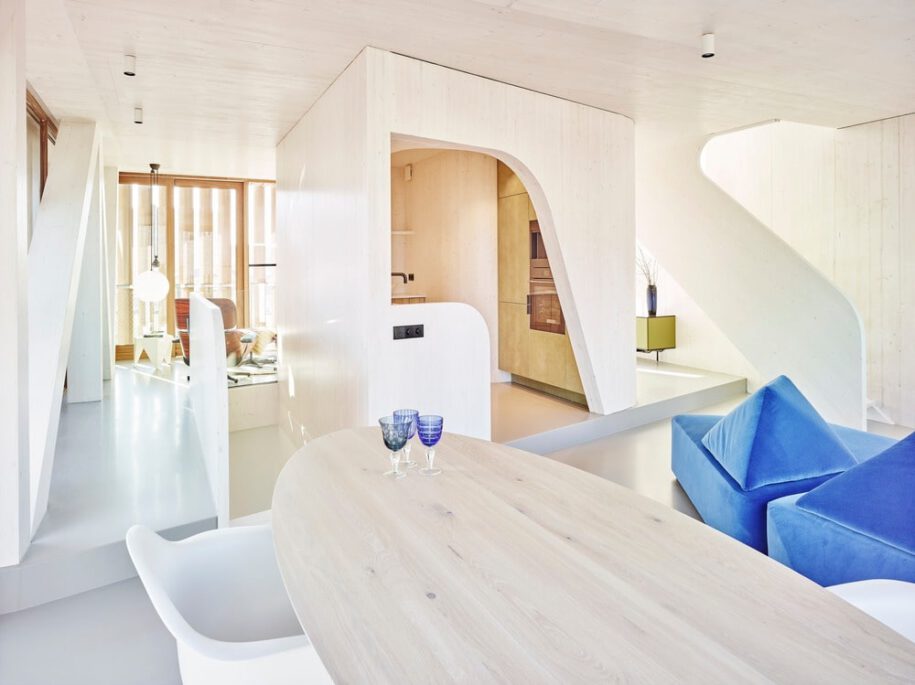
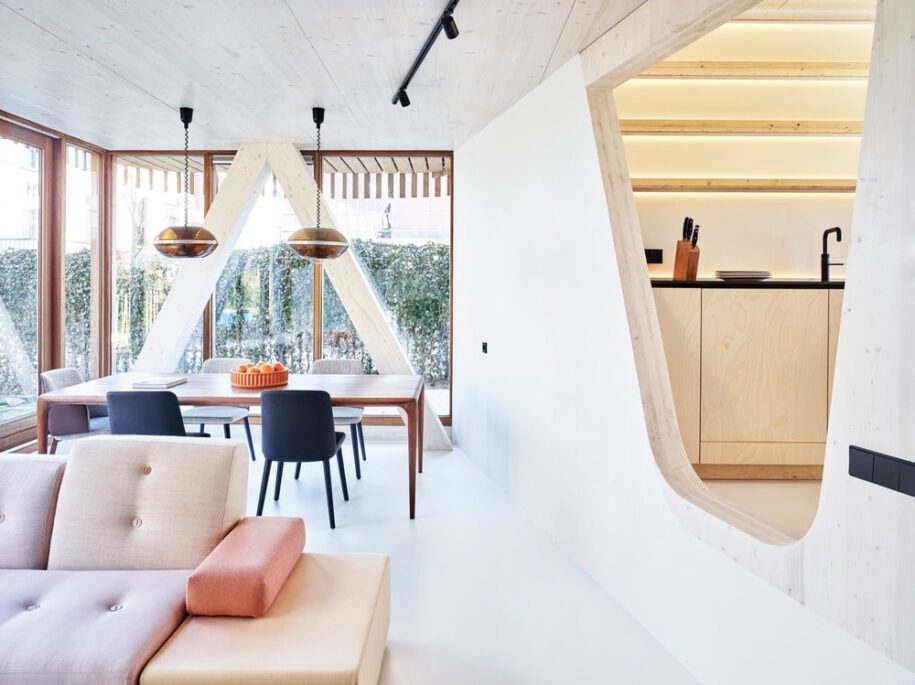
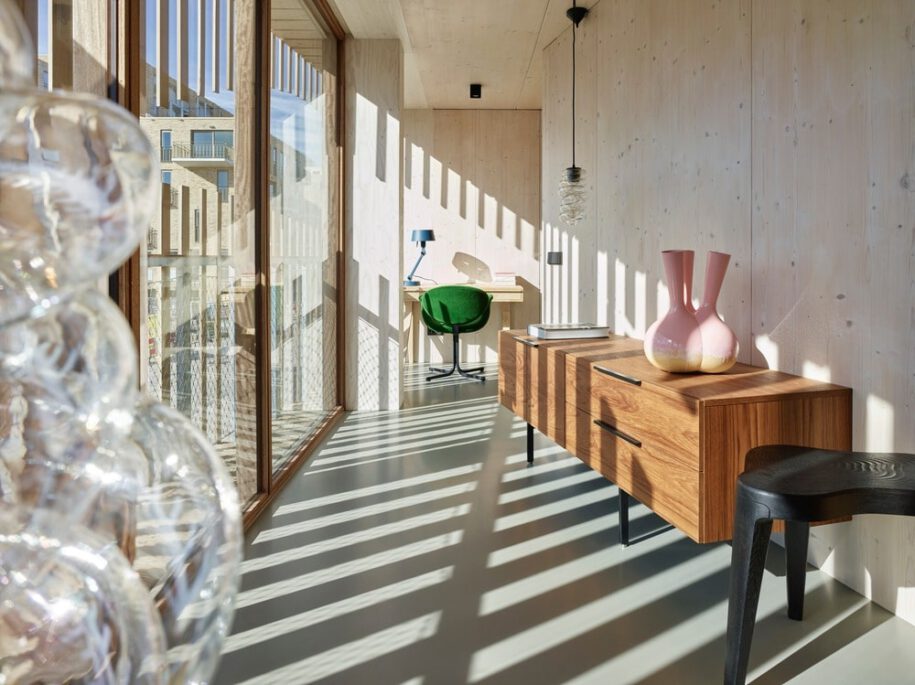
About GG-loop
Established in 2014, GG-loop believes that design is not simply about creating functional objects and spaces. Instead, design should tell a story, taking its user on a journey. GG-loop tackles design challenges with this in mind, articulating a vision for projects that is at once future-forward, organic and refined. At all times in the design process, GG-loop places the end-user front and centre.
GG-loop’s design aesthetic is extravagant without being invasive, visionary and futuristic while paying attention to local cultures, customs and sensibilities. Construction of the key internal elements required strong craftsmanship and timberwork, as well as solid structural expertise.
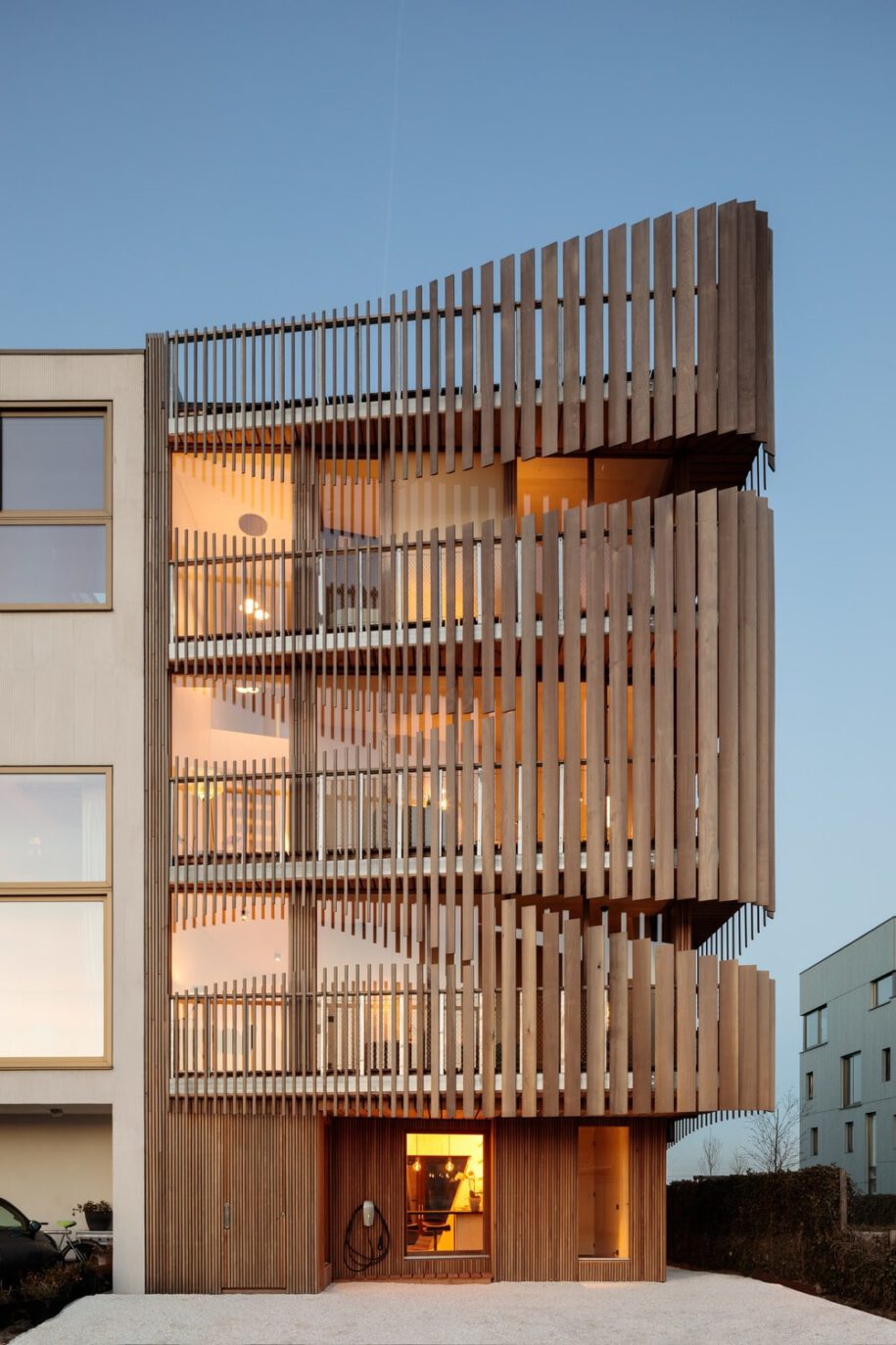
GG-loop was founded by Giacomo Garziano, a graduate of Facolta’ di Architettura di Firenze (2008). Garziano has more than 10 years experience working for studios like NIO Architecten and UNStudio on projects ranging from product design to large scale urban planning and design projects for the real estate, retail, infrastructure and culture industries. Major projects to date include the Doha Metro and the extension of the Contemporary Art Museum in Prato, Italy.
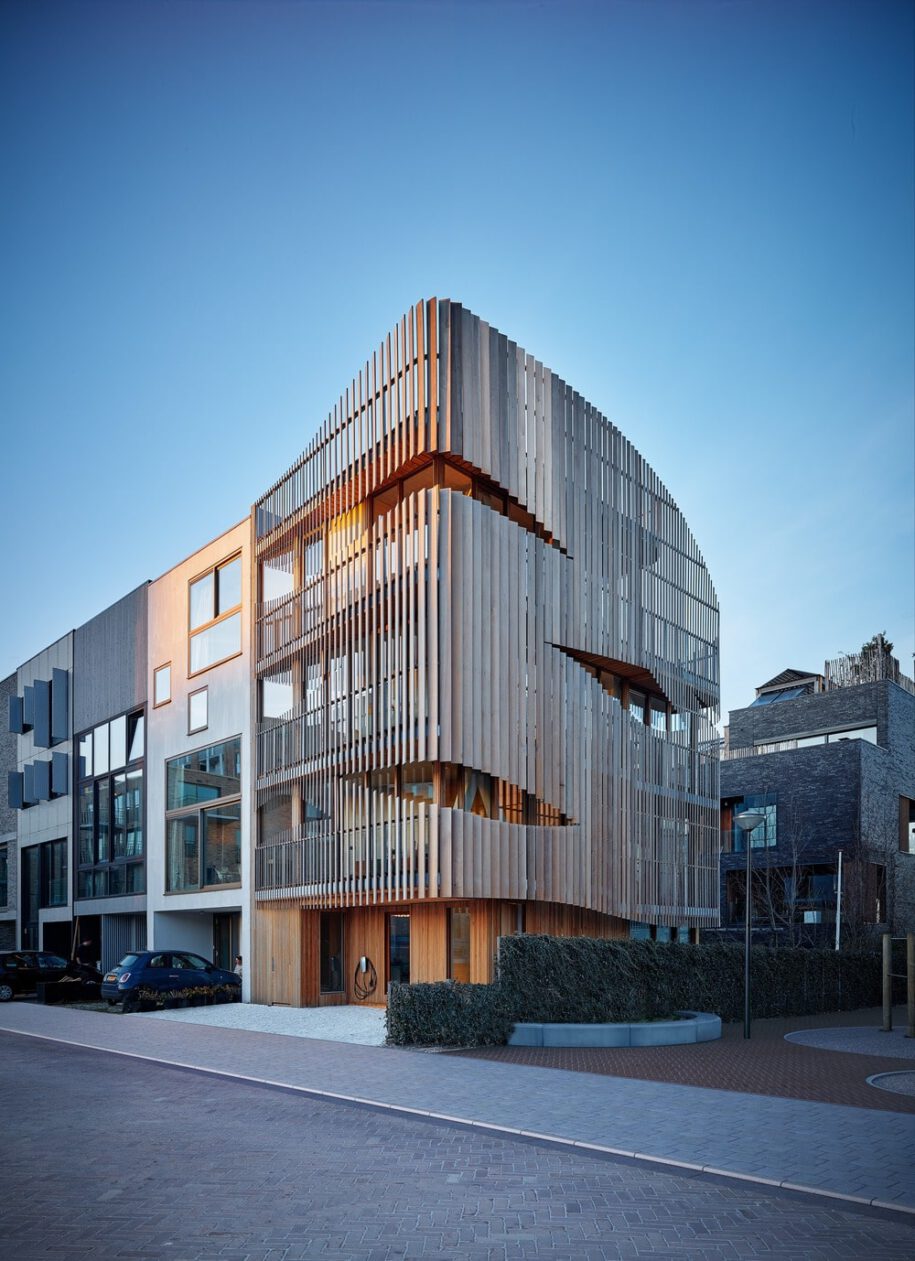
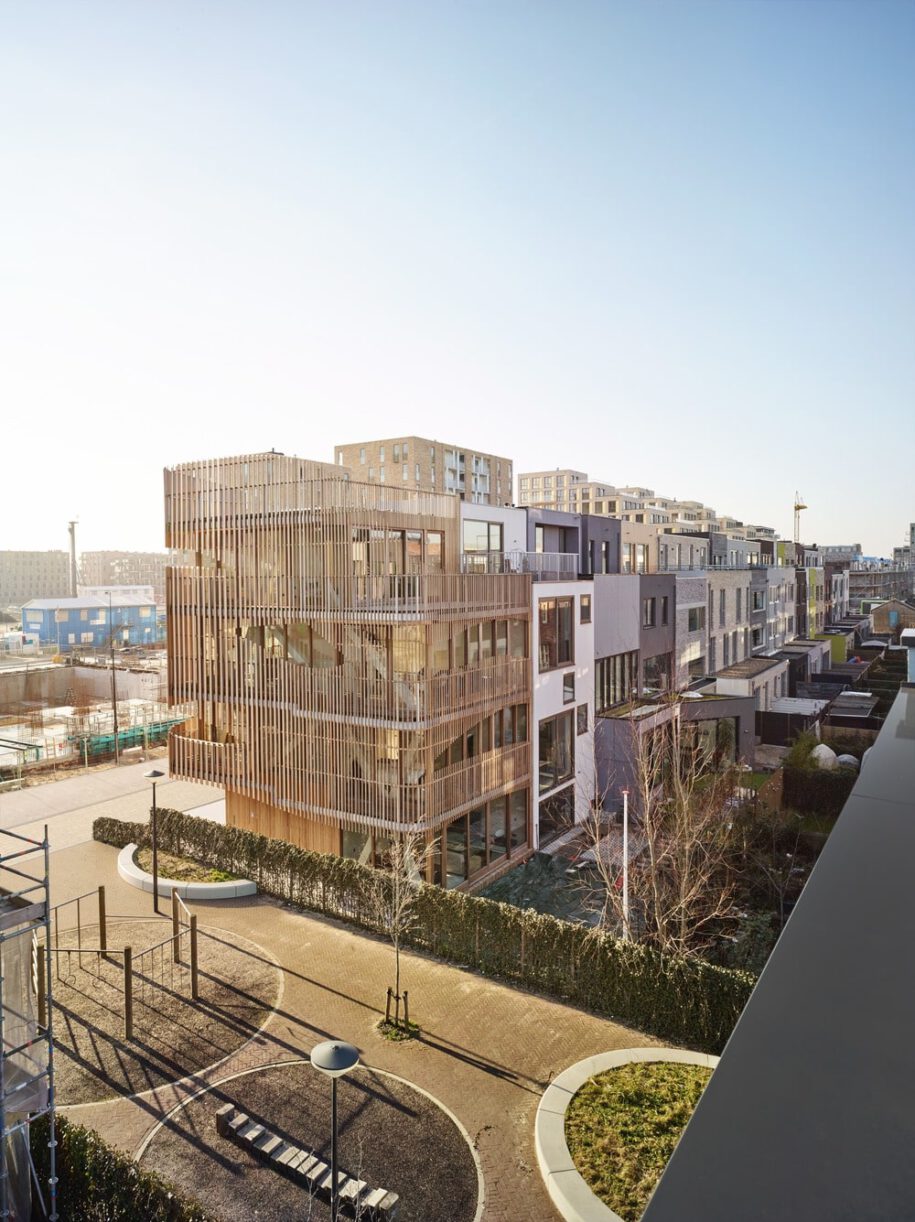
Facts & Credits
Project title Freebooter
Location Zeeburgereiland island, Amsterdam, Netherlands
Architecture firm GG-loop
Design Team Giacomo Garziano, Robbie Nijzen, Simone Peluso, Daniele Colombati, Jan-Willem Terlouw, Piergiorgio Angius, Luis Cascales, Krzysztof Zinger
Real Estate Development Johan Beijers, Giacomo Garziano
Construction Engineering Pieters Bouwtechniek
Installations Engineering Mabutec
Main contractor Kolthof BV
Timber construction Binderholz, Ekoflin
Installations JF Totaaltechniek
Kitchen and bathrooms KCP Amsterdam, Peer Kolsters
Switches & systems Jung
Floors and Walls finishing Senso
Meshes Carl Stahl
Furniture supplier Plaisier Interieur
Architectural lights Artemide, Wever&Ducré, LEDBCN
Bathroom fixture Flaminia, Meir, Villeory-Boch
Awards
Frame awards 2020 – Large Apartment of the Year – Amsterdam (NL) – Frame magazine (winner)
Archilovers – Best of the Year 2019 – Bari (IT) – Archilovers (winner)
WAF awards 2019 – Amsterdam Prize – Amsterdam (NL) – World Architecture Festival (winner)
Best of the Year 2019 – Environmental Impact – New York City (US) – Interior Design Magazine (winner)
AMP 2019 – Green architecture – Los Angeles (US) – Architecture MasterPrize (winner)
CODA awards 2019 – Residential – Madison (US) – Codaworx (winner)
A’Design awards 2019 – Sustainable and Green Design – Como (IT) – A’Design (winner)
DNA Paris awards 2019 – Green Architecture – Paris (FR) – DNA Paris (winner)
READ ALSO: Architecture of unpredictable intentions | Research thesis by Anna Konstantopoulou and Dimitris Ntoupas